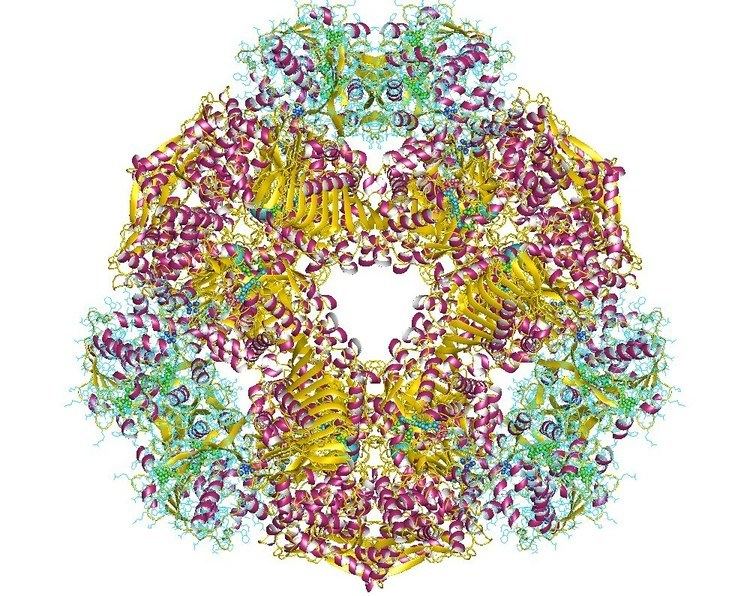EC number 1.4.1.13 ExPASy NiceZyme view | CAS number 37213-53-9 | |
 | ||
In enzymology, a glutamate synthase (NADPH) (EC 1.4.1.13) is an enzyme that catalyzes the chemical reaction
Contents
L-glutamine + 2-oxoglutarate + NADPH + H+Thus, the four substrates of this enzyme are L-glutamine, 2-oxoglutarate (α-ketoglutarate), NADPH, and H+, whereas the two products are L-glutamate and NADP+.
This enzyme belongs to the family of oxidoreductases, specifically those acting on the CH-NH2 group of donors with NAD+ or NADP+ as acceptor. This enzyme participates in glutamate metabolism and nitrogen metabolism. It has 5 cofactors: FAD, Iron, FMN, Sulfur, and Iron-sulfur.
It occurs in bacteria and plants but not animals, and is important as it provides glutamate for the glutamine synthetase reaction.
Nomenclature
The systematic name of this enzyme class is L-glutamate:NADP+ oxidoreductase (transaminating). Other names in common use include:
Structural studies
As of late 2007, only one structure has been solved for this class of enzymes, with the PDB accession code 1EA0.
